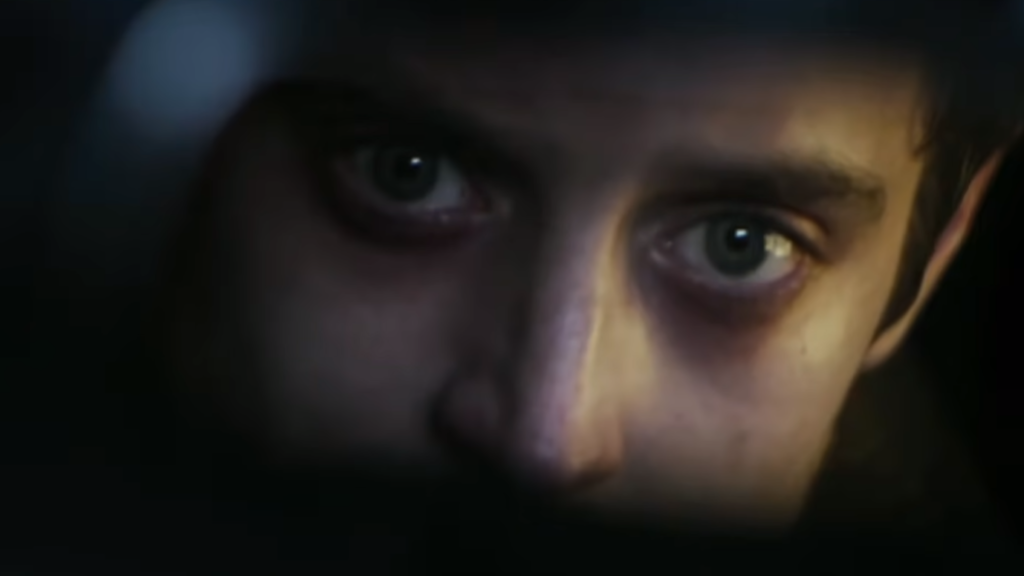Maniac
2012

Rated: NR
Genre: Horror, Thriller
Country: France, U.S.
Run-Time: 1h 29min
Director: Franck Khalfoun
Cast
Elijah Wood……………..Frank Zito
Nora Arnezeder………Anna D’Antoni
Jan Broberg……………..Rita
Megan M. Duffy………Lucie
Franck Khalfoun’s 2012 adaptation of Maniac is one of those rare examples of a horror remake done right. It both pays respectful tribute to William Lustig’s 1980 slasher classic while simultaneously finding a way to carve out its own path in the horror canon.
And honestly, I don’t blame anybody who might feel that the original is still the better the movie. For one thing, it is gorier. It is also scarier. And Joe Spinell, who plays Frank, is far more convincing playing the serial killer suffering from psychotic episodes than Elijah Wood. (Of course, Spinell did co-write the original’s script.) Then there’s the addition of scream queen icon Caroline Munro.
But that is partially why Khalfoun’s remake works so well. It isn’t out to outdo. It doesn’t try to recreate the original’s beloved shotgun kill or force feed the graveyard scene to its climax. It just does its own thing in its own innovative way while making respectful nods to many of the original’s plot points.
So just what sets the remake apart? For this, Khalfoun employs a rarely used film technique that briefly trended after the critical recognition of Gasper Noé’s Enter the Void. Maniac is filmed almost entirely using first-person perspective. This means the camera essentially acts as Frank’s eyes for the whole duration of the movie- with the noted exceptions of a few interesting circling shots during scenes of violence (like having an out of body experience) and a handful of flashbacks.
Fans of the New French Extremity movement will also recognize the name of Alexandre Aja, this time taking on the role of co-writer and co-producer. He was the director of the divisive cult hit High Tension [Haute Tension], a film that would probably would have been considered amongst the best in French horror had its ending had made a single lick of sense. But the French influence is felt all over this film. (In fact, most of the people involved behind the camera are French, including Khalfoun. This is essentially a French film made mostly for English-speaking audiences.)
And at least to me, it makes sense that a post-Frodo Elijiah Wood would take on a project like Maniac, even though shooting in first-person really limits his screen presence to a lot of off-camera voice work with the occasional glimpses of our protagonist in mirrors and window reflections. Those following Wood’s career recognize his support of quirky indie projects both as an actor and as a producer. He is also on The Midnight Selections with Come to Daddy. And given his interest in dark material, I don’t doubt he’ll make his way onto the list again.
So what’s Maniac about?
The film follows Frank, an eccentric young man who during the day restores antique mannequins for a living. At night, Frank stalks and kills women, stealing their scalps and adding them to his private collection of mannequin trophies…that he talks to…cause he’s crazy as all Hell. He has mommy issues. One can conclude that this has led to his women issues. The only thing missing is a misogynistic cyber community to give him support while hypocritically edging him on to do even crazier shit.
On the surface, it seems like Frank has his whole schizophrenic serial killer routine pretty well worked out, that is until he meets Anna (Nora Arnezeder), an artist that has made a career out of photographing mannequins. Anna puts up with his quirks differently than other people and this causes Frank to develop feelings for her. Could love help Frank change his homicidal ways? Of course not! This is obviously a disaster in the making.
Even the most diehard fans of the original have to concede that the 2012 Maniac does a few things better, particularly in the story department. This time around, things unfold much more organically. For one thing, the relationship that Frank has with Anna is much better developed. In fact, all of the female characters are much better developed in Khalfoun’s film. We are also provided a reason for why Frank has all these mannequins lying about his home- the original Maniac doesn’t actually tell us how Frank earns his living- and this becomes central to the film’s plot.
Lustig’s film was revered for its realistic gore scenes, but Khalfoun’s remake uses gore more sparingly. Even so, rest assured that thirty-two years of technical advances and Aja in a producer’s chair certainly means that there is still a high level of realism to the gore when Khalfoun does let loose.
What makes Maniac a must-watch for horror fans is it’s the execution of the first-person filming concept. Not that horror fans are unfamiliar with a first-person perspective horror shots. Tons of films provide sequences of killers voyeuristically observing their victims by including POV shots. And found footage films always have a person holding the camera. But this is different. In a found footage film, the person holding the camera is a victim. (Although Greg Hale’s V/H/S/2 segment, “A Ride in the Park, does a great job showing us the world through the eyes of a zombie.) And those POV shots of killers watching from the bushes don’t usually extend up to and or even after the killing. In Maniac, we are seeing the world as this serial killer sees it and this gives the film a very unique feel.
Eventually, the first-person concept would run its course shortly after the release of Hardcore Henry in 2015 failed to produce sufficient box office returns- though that has more to do with STXfilms paying too much to acquire the film rights, creating a much higher benchmark for success. (I have never seen Hardcore Henry and I am not advocating that you do. Judging from the trailers, the film looks like someone transferred ADHD into celluloid.) Once a well-marketed mainstream first-person action film failed to gain mass support, the craze went back to being a preferred perspective of many video games. (Personally, I prefer playing in third person.)
In contrast to its manic action counterpart, Maniac is slower paced and more methodical in its delivery. The first-person concept feels like a better fit for horror than in other genres and in Maniac it lends itself to some pretty memorable moments, like the first kill or the date with Lucie. It also adds something extra to Frank’s delusions since we are witnessing his breaks from reality from his point of view. And if you already know how the original film ends, just wait until you see how this part gets treated in the remake.
But if you really want to make a fun comparison, watch how both films handle the subway stalking scene. Its worth noting that the original film actually includes a first person shot from the victim’s perspective when she glances out from the bathroom stall to see if Frank’s still there. It is an excellent example reminding us that first-person perspective shots have had a long history in horror. And though it may seem like more of a gimmick in other genres, Khalfoun’s Maniac proves that filming nearly an entire film in first-person perspective can give you interesting results when done right.
